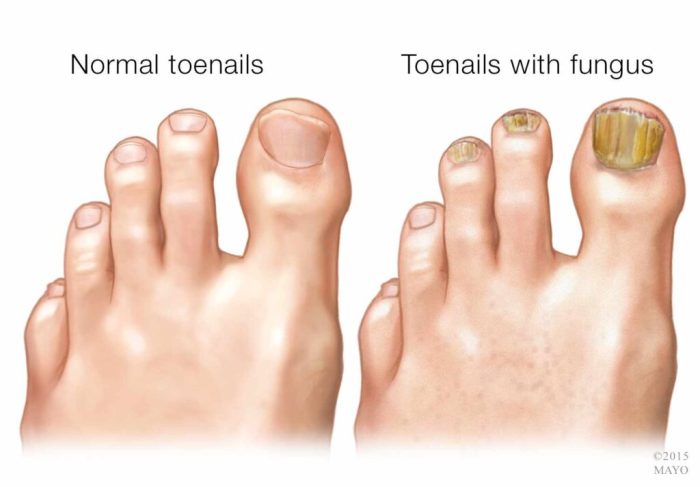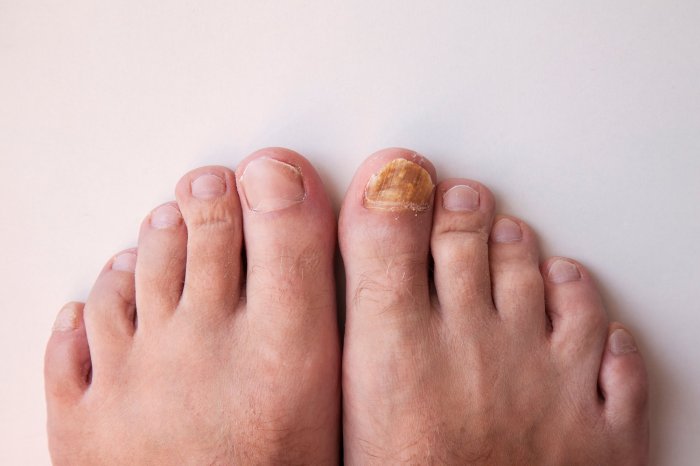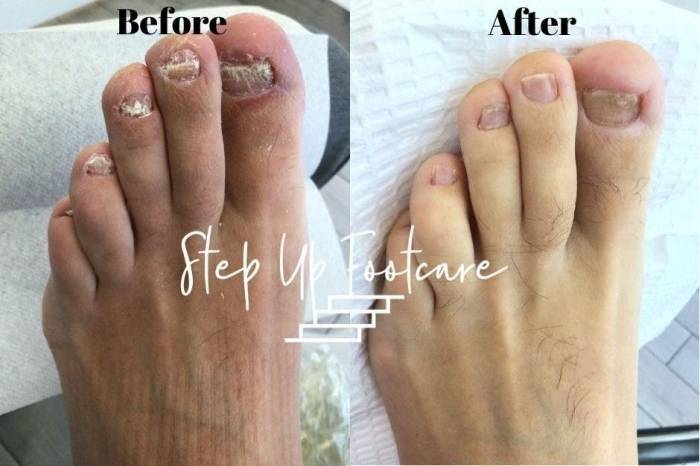Does Nail Polish Cause Toenail Fungus?
Nail Polish and Toenail Fungus: Exploring the Connection

Source: lasernailtherapy.com
Does nail polish cause toenail fungus – The relationship between nail polish and toenail fungus is a topic of ongoing discussion. While nail polish itself doesn’t directly cause fungal infections, certain ingredients and application practices can create an environment conducive to their growth. This article explores the potential links between nail polish use and toenail fungus, examining various factors that contribute to the development of this common condition.
Nail Polish Ingredients and Their Potential Impact on Fungal Growth

Source: arizonafootdoctors.com
Nail polish is a complex mixture of various chemicals. Common ingredients include solvents (like ethyl acetate and butyl acetate), film-formers (like nitrocellulose), plasticizers (like dibutyl phthalate), and pigments. Some of these components can affect toenail health. For example, the solvents can dry out the nails, potentially making them more susceptible to fungal invasion. Plasticizers can alter the nail’s permeability, potentially trapping moisture and creating a favorable environment for fungal growth.
Furthermore, certain pigments might contain substances that could irritate the nail bed, leading to inflammation and increased susceptibility to infection.
Gel nail polish, due to its prolonged application and the need for UV curing, may present additional risks. The prolonged occlusion of the nail plate can create a warm, moist environment ideal for fungal growth. Regular nail polish, while not as occlusive, can still trap moisture if not applied and removed properly. Some studies suggest that certain ingredients in nail polish, particularly those with formaldehyde or toluene, might exacerbate existing fungal infections.
These chemicals can cause irritation and damage to the nail plate, increasing its vulnerability.
Hygiene Practices and Nail Polish Application Techniques

Source: medium.com
Maintaining good nail hygiene is crucial in preventing toenail fungus. This includes keeping toenails clean and dry, trimming them regularly to avoid ingrown nails, and avoiding sharing nail care tools. Using clean tools and techniques during nail polish application is equally important. Contaminated tools can introduce fungi directly onto the nails. Improper removal of nail polish, particularly the use of harsh chemicals or aggressive scraping, can damage the nail plate, making it more susceptible to infection.
- Step 1: Cleanse: Thoroughly clean and dry nails before applying polish.
- Step 2: Prep: Use a base coat to protect nails and improve polish adhesion.
- Step 3: Apply: Apply thin coats of polish to prevent chipping and allow proper drying.
- Step 4: Seal: Use a top coat to protect the polish and add shine.
- Step 5: Remove: Soak cotton pads in acetone-based remover, gently apply, and wait before removing polish.
- Step 6: Moisturize: Moisturize nails and cuticles after removal.
The Influence of Moisture and Airflow on Toenail Health
Moisture trapped under nail polish creates a perfect breeding ground for fungi. Limited airflow further exacerbates this issue. The lack of oxygen inhibits nail growth and increases the likelihood of fungal infection. Gel polish, being more occlusive than regular polish, tends to trap more moisture and reduce airflow, thus posing a higher risk. Regular polish, when applied thickly or left on for extended periods, can also contribute to this problem.
| Factor | Impact on Nail Health | Prevention Strategies | Example |
|---|---|---|---|
| Moisture | Creates a favorable environment for fungal growth, leading to infections and discoloration. | Keep nails dry, avoid prolonged exposure to water, and allow for adequate drying time between polish applications. | Wearing socks after showering |
| Airflow | Improves nail health by reducing moisture buildup and preventing fungal growth. | Allow nails to breathe regularly; avoid prolonged use of occlusive nail products. | Removing nail polish regularly |
| Nail Polish Type | Gel polish, due to its longer wear time and occlusive nature, poses a higher risk than regular polish. | Choose breathable nail polishes, and avoid frequent application. | Opting for regular polish over gel |
| Hygiene | Poor hygiene practices increase the risk of fungal infections. | Maintain clean nails, trim regularly, and use clean tools. | Regularly cleaning under nails |
Factors Increasing Susceptibility to Toenail Fungus
Several factors can increase an individual’s susceptibility to toenail fungus. These include underlying health conditions like diabetes and impaired immune function, genetic predisposition, and lifestyle factors such as wearing tight shoes, frequently exposing feet to moisture, and having pre-existing nail damage.
- Diabetes
- Weakened immune system
- Peripheral vascular disease
- Genetic predisposition
- Excessive sweating
- Wearing tight or poorly ventilated shoes
- Nail trauma or injury
Prevalence of Toenail Fungus and Nail Polish Use: A Correlation Study, Does nail polish cause toenail fungus
While definitive studies on the correlation between nail polish use and toenail fungus prevalence are limited, researchers could conduct epidemiological studies comparing toenail fungus incidence in populations with varying nail polish usage habits. This would involve surveying large groups of individuals, collecting data on their nail polish use frequency and types, and assessing the prevalence of toenail fungus through physical examinations or diagnostic tests.
Statistical analysis would then be used to determine any correlation.
Addressing Misconceptions About Nail Polish and Toenail Fungus
A common misconception is that nail polish directly causes toenail fungus. This is inaccurate; however, certain practices associated with nail polish use, such as trapping moisture and creating an anaerobic environment, can contribute to fungal growth. Another myth is that all types of nail polish equally increase the risk of infection. While gel polish might pose a slightly higher risk due to its occlusive nature, regular polish can also contribute if not used and removed properly.
Key Questions Answered: Does Nail Polish Cause Toenail Fungus
Can removing nail polish frequently prevent toenail fungus?
Regular removal allows for better airflow and reduces moisture buildup, which can help prevent fungal growth. However, it’s not a guaranteed preventative measure.
Are there nail polishes specifically designed to reduce the risk of toenail fungus?
While no nail polish explicitly claims to prevent toenail fungus, some breathable formulas may minimize moisture buildup, potentially reducing risk.
What are the early signs of toenail fungus?
Early signs often include discoloration (yellowing, browning, or darkening), thickening, crumbling, and separation of the nail from the nail bed.
Should I see a doctor if I suspect toenail fungus?
Yes, a doctor can properly diagnose and recommend appropriate treatment options, especially if the infection is severe or doesn’t respond to over-the-counter remedies.
















